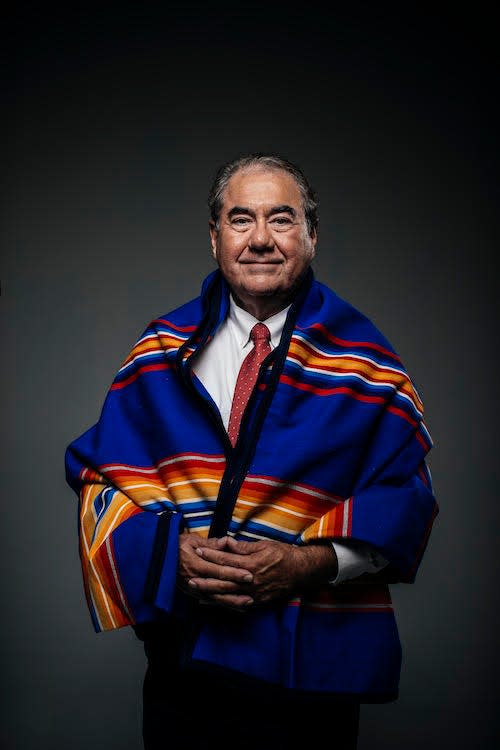Dramatic is a nice way to describe what has happened to Native Americans through history
Learning in new situations can be nerve-wracking. My first day in law school was one of those times, and I remember the law professor saying, "I want you to remember this: Do not confuse what is legal or illegal with what is right or wrong."
While I've never forgotten that important lesson, I have yet to determine who decides the difference. I have sought this answer in law books, church, in Osage ceremonies and from others. What I do know without question is that throughout the history of the state of Oklahoma, there has been a lot of legal and illegal and a lot of right and wrong.
More: Clash over jurisdiction: What tribal leaders, Gov. Stitt, others say will move Oklahoma forward
Legal history is essential because the law, at least in the United States of America, relies on the results of a conflict being resolved in similar situations. In other words, what happened in the past when decision-makers of their time faced the same questions as we face today, and how did they arrive at their decisions? In the United States, the first law is the Constitution of the United States. Yet, this foundation of all U.S. laws does not express what is legal or illegal for every situation. Throughout constitutional law, the final determination of a constitutional conflict is often the answer to the question of what is in the national interest. In the field of Native American law, the decision-makers of what is in the "national interest" are the U.S. Congress, the U.S. president and the U.S. Supreme Court, but not the states. Therefore, any negative and false rhetoric put forth by states against tribal nations is dramatics, not law.
Dramatic is a nice way to describe what has happened to Native Americans. Most Native nations have deeply traumatic histories. For the Osage, history shows we lost over 90% of our people during 80 years as we sadly left our Missouri and Arkansas homelands, then scattered into Kansas and other places. When our ancestors negotiated with the Cherokee Nation to purchase our final reservation, we bought the land we previously owned back from the Cherokee Nation, who had arrived there after their Trail of Tears. The Osage made this purchase with our own money from selling Osage lands in the path of the railroads in Kansas.
Throughout this removal, we never disbanded, and the United States continued to recognize we are a people, not under the authority of any state. In 1906, we accepted difficult terms from the United States. A new law said our lands on the surface were to be divided into parcels. Then, the new laws said our surface lands could become eligible for sale as long as the United States approved the sale. The validity of many of those sales is questionable. We, the Osage, held our vast underground reservation together as the hands of greed intervened, again with U.S. approval. Throughout this difficult time, the Osage existed as a nation recognized by the United States. Then, as Oklahoma entered as the 46th state in 1907, it did so with recognition of the federal relationship arising from the U.S. Constitution.
The state flag of Oklahoma has an Osage war shield at its center. This Osage shield has six crosses and seven eagle feathers. A peace pipe and olive branch cross this shield; below is the word "Oklahoma."

Geoffrey Standing Bear is the Osage Nation principal chief.
This article originally appeared on Oklahoman: Osage leader: Most Native nations have deeply traumatic histories
